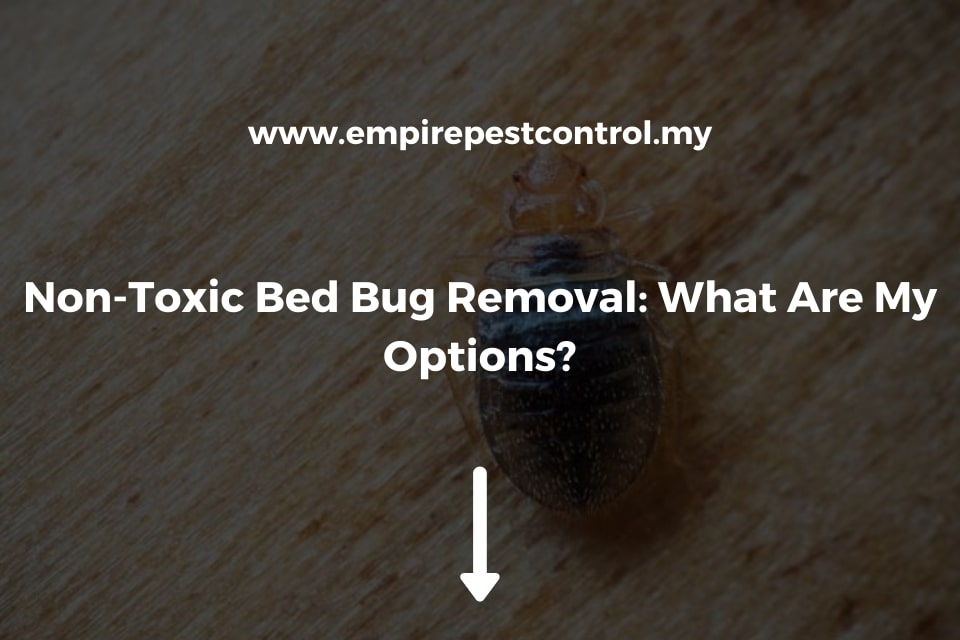Many individuals are unaware they have a bed bug infestation until it becomes a significant issue. Often, the bites from these pests are confused with mosquito bites or allergic reactions to different laundry detergents. Bedbugs flourish in mattresses and on furniture, placing those in shared-wall apartment buildings or multi-floor dwellings at higher risk, even if they don’t venture outside their homes. Bearing this in mind, it’s advisable to enlist the services of Empire Pest Control, the top pest extermination company in Malaysia.
Bed bugs are a pest that is becoming more and more common in our society. Once they take over your home, it can be difficult to get rid of them without the use of toxic chemicals. This blog post will teach you how to eliminate bedbugs with non-toxic chemicals, so you don’t have to worry about harming yourself or your family!
Contents
Thorough Bed Bug Inspection
Among the ways to effectively remove bed bugs and stop their population from growing are by constant and thorough inspection. Bed bugs can surprisingly cause allergic reactions, and they’re difficult to get rid of once they infest your home.
But what if you could identify bed bugs before they had the chance to make themselves at home? That’s where bed bug inspections come in! If you’re able to detect bed bugs, you’ll have a higher chance of effectively removing them before they can inflict even more damage.
Keep in mind that these creatures are tiny, and their eggs are not visible to the naked eye. Start by looking for bed bugs on and around bed frames and mattresses.
Wash Your Linens in Hot Water to Kill Bed Bugs
Imagine you’re just about to drift off into a peaceful slumber when all of a sudden, you feel an itch on your arm. You scratch it and then notice a bed bug scurry across the sheets. This is one of many reasons why washing your linens in hot water is important for preventing bed bugs from taking over your home! Not only is this method effective, but it also helps you eliminate these critters without the use of toxic chemicals.
Washing the sheets in hot water will kill the bed bugs and make it, so they do not return after you finish cleaning up the area. Since bed bugs don’t like heat, they’re sure to die off when you wash your linens, pillowcases, and blankets in hot water filled with detergent.
Utilize Vacuum to Remove Bed Bugs
No one wants to deal with chemicals that can harm your health regardless of you’re dealing with stubborn bed bugs. With this in mind, it’s a good idea to use a vacuum to remove these critters efficiently. However, take note that this method doesn’t kill them but will only take them away from the area they’re infesting.
To eliminate these creatures, vacuum the upper and lower part of the mattress, the carpet, the bed frame, all sides of the headboard, and any nooks and crannies. Do this method each day if you’re treating bed bugs, so you can see significant changes. Remember to throw out the contents of the vacuum bag in a sealed container to ensure the bed bugs won’t creep back to your bed.
Use Essential Oils To Kill Bed Bugs
If you have bed bugs, then you know that they are one of the most difficult pests to get rid of. A lot of people end up going on a spending spree trying to purchase all sorts of chemicals and products in an attempt to kill bed bugs. If this sounds like something you want nothing to do with, then we have some good news! Essential oils can be used as a natural way to kill bed bugs without causing any harm or damage.
Just dab a cotton ball with a few drops of essential oil such as eucalyptus or tea tree and place it in corners where you suspect bed bugs to be. These creatures hate the smell of essential oil and will scurry away from your place!
Conclusion
If you live in an area where bed bugs are a problem, then it’s important to find ways to deal with them. There have been many people who question the safety of non-toxic treatments for bed bug infestations and as such we want to help educate our readers on why these strategies can be effective without being toxic. Bed bugs often enter your home through luggage, clothing, or furniture that has traveled from another location so finding out how they got in is essential.

